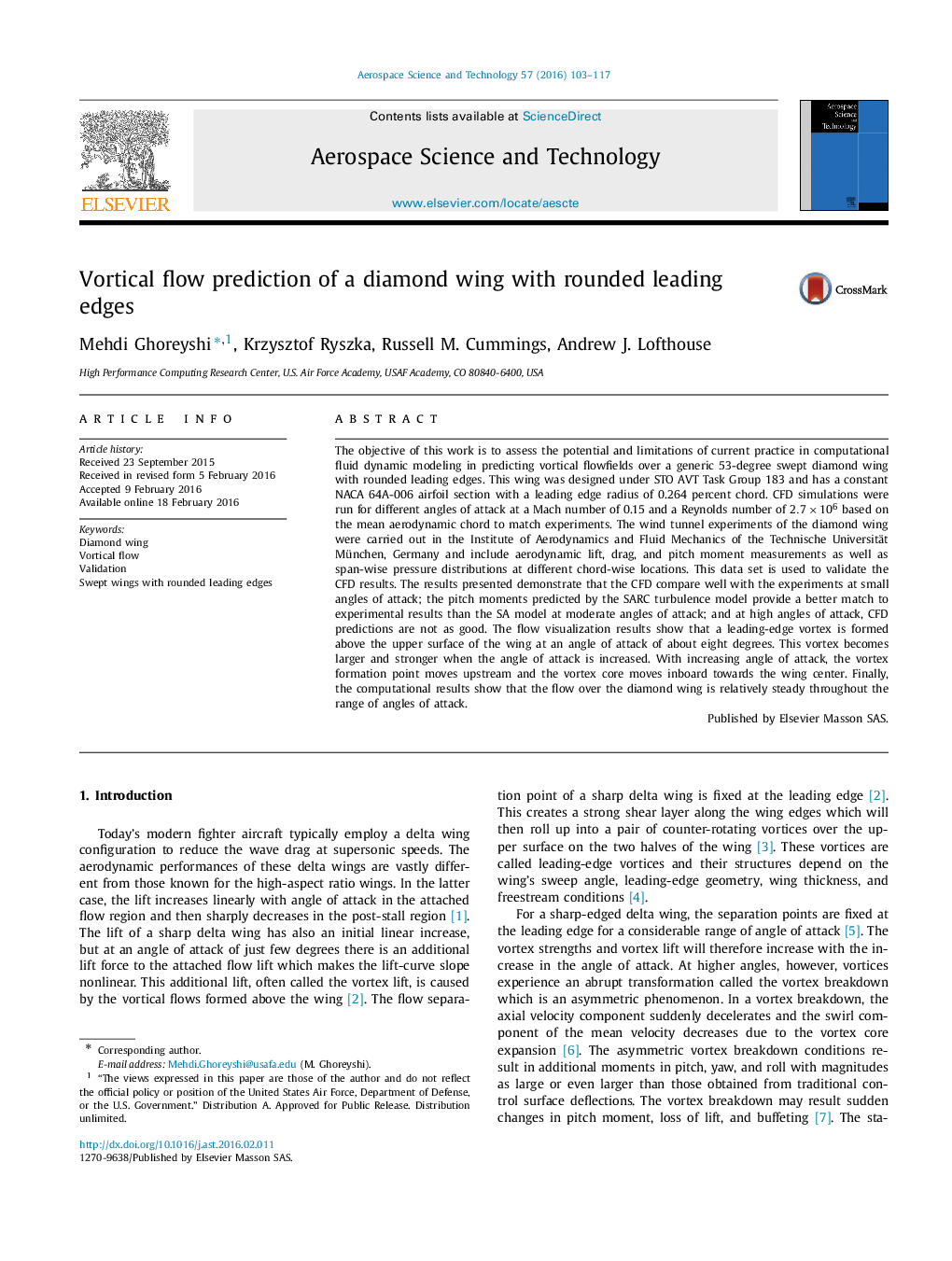| کد مقاله | کد نشریه | سال انتشار | مقاله انگلیسی | نسخه تمام متن |
|---|---|---|---|---|
| 5473069 | 1520077 | 2016 | 15 صفحه PDF | دانلود رایگان |
عنوان انگلیسی مقاله ISI
Vortical flow prediction of a diamond wing with rounded leading edges
ترجمه فارسی عنوان
پیش بینی جریان خروجی یک بال الماس با لبه های پیشانی گرد
دانلود مقاله + سفارش ترجمه
دانلود مقاله ISI انگلیسی
رایگان برای ایرانیان
کلمات کلیدی
بال الماس، جریان خروجی، اعتبار سنجی، بال ها را با لبه های پیشانی گرد می اندازید
موضوعات مرتبط
مهندسی و علوم پایه
سایر رشته های مهندسی
مهندسی هوافضا
چکیده انگلیسی
The objective of this work is to assess the potential and limitations of current practice in computational fluid dynamic modeling in predicting vortical flowfields over a generic 53-degree swept diamond wing with rounded leading edges. This wing was designed under STO AVT Task Group 183 and has a constant NACA 64A-006 airfoil section with a leading edge radius of 0.264 percent chord. CFD simulations were run for different angles of attack at a Mach number of 0.15 and a Reynolds number of 2.7Ã106 based on the mean aerodynamic chord to match experiments. The wind tunnel experiments of the diamond wing were carried out in the Institute of Aerodynamics and Fluid Mechanics of the Technische Universität München, Germany and include aerodynamic lift, drag, and pitch moment measurements as well as span-wise pressure distributions at different chord-wise locations. This data set is used to validate the CFD results. The results presented demonstrate that the CFD compare well with the experiments at small angles of attack; the pitch moments predicted by the SARC turbulence model provide a better match to experimental results than the SA model at moderate angles of attack; and at high angles of attack, CFD predictions are not as good. The flow visualization results show that a leading-edge vortex is formed above the upper surface of the wing at an angle of attack of about eight degrees. This vortex becomes larger and stronger when the angle of attack is increased. With increasing angle of attack, the vortex formation point moves upstream and the vortex core moves inboard towards the wing center. Finally, the computational results show that the flow over the diamond wing is relatively steady throughout the range of angles of attack.
ناشر
Database: Elsevier - ScienceDirect (ساینس دایرکت)
Journal: Aerospace Science and Technology - Volume 57, October 2016, Pages 103-117
Journal: Aerospace Science and Technology - Volume 57, October 2016, Pages 103-117
نویسندگان
Mehdi Ghoreyshi, Krzysztof Ryszka, Russell M. Cummings, Andrew J. Lofthouse,
